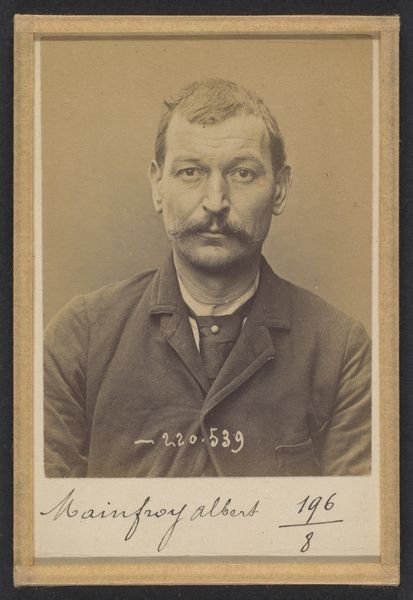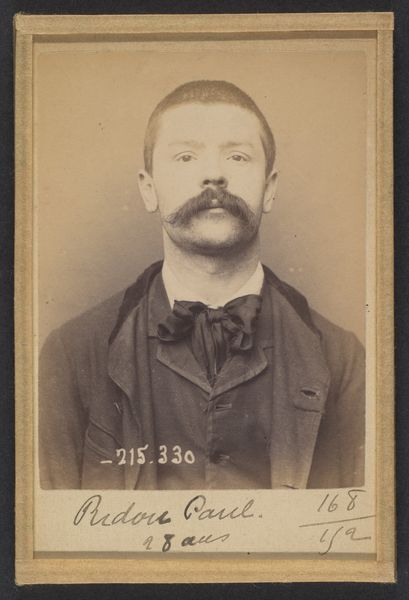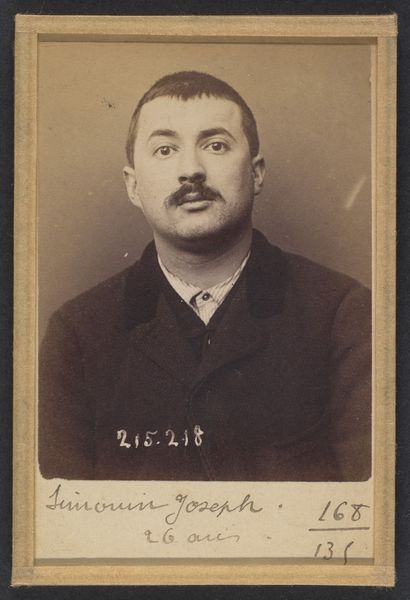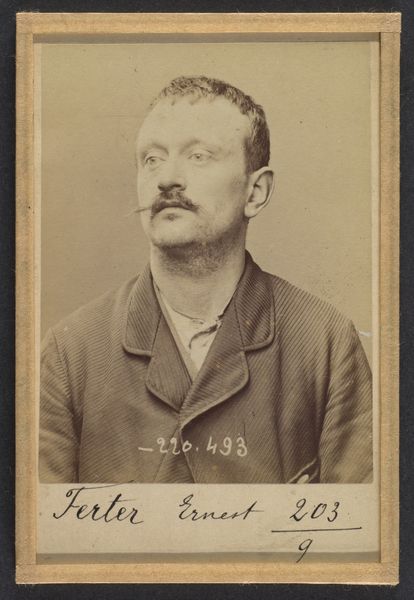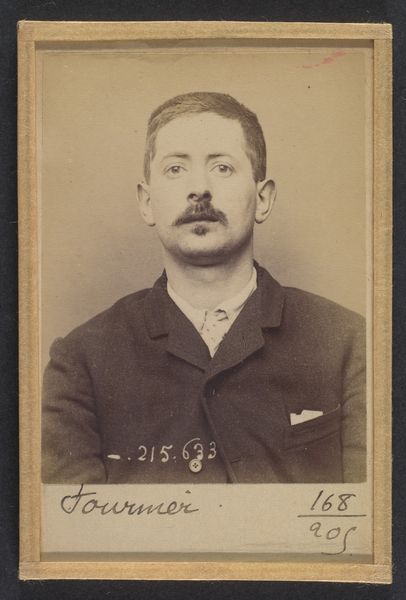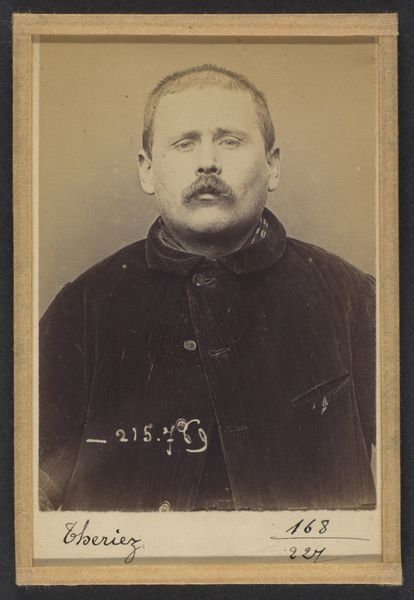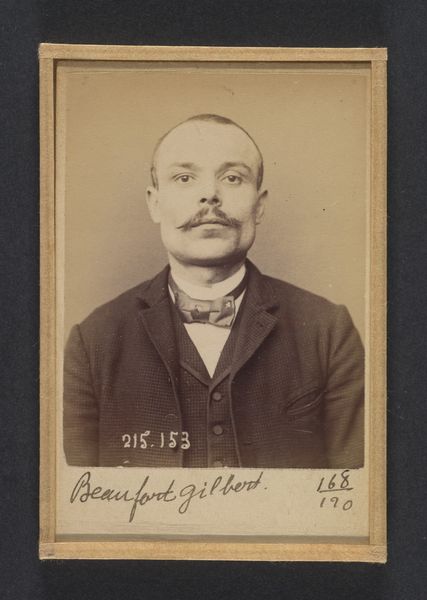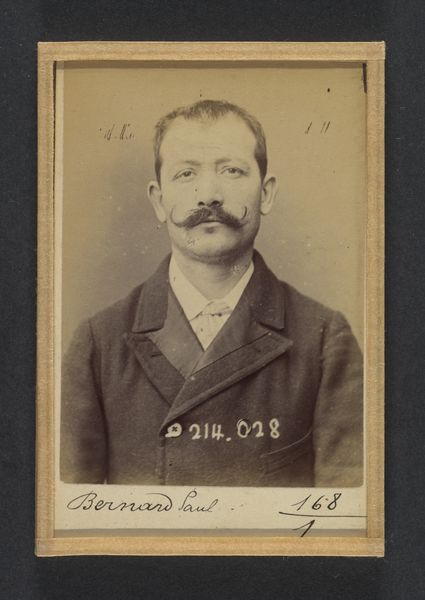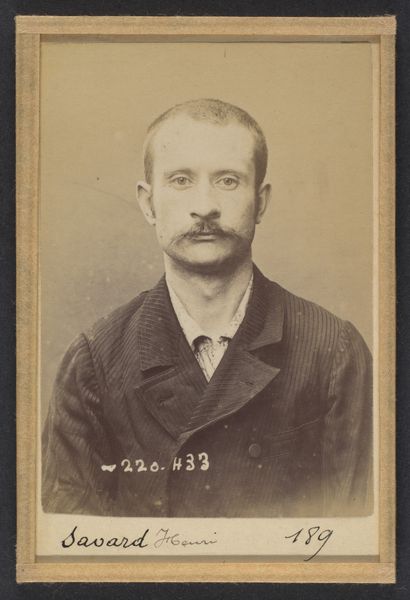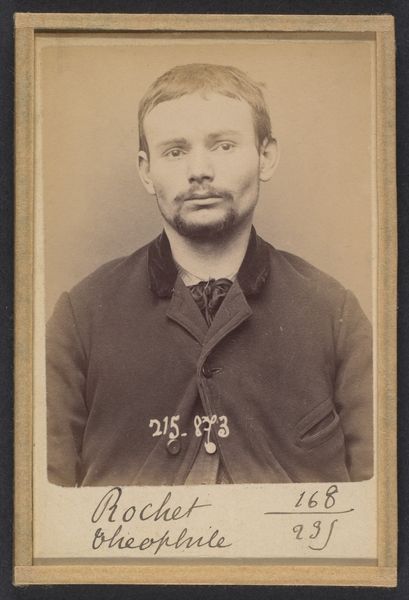
Giroux. Hippolyte. 34 ans, né à Montreuil les Mines (Saone & Loire). Mécanicien. Anarchiste. 28/2/94. 1894
0:00
0:00
photography
#
portrait
#
portrait
#
photography
#
realism
#
poster
Dimensions: 10.5 x 7 x 0.5 cm (4 1/8 x 2 3/4 x 3/16 in.) each
Copyright: Public Domain
Curator: This haunting photograph by Alphonse Bertillon, taken in 1894, is titled "Giroux. Hippolyte. 34 ans, né à Montreuil les Mines (Saone & Loire). Mécanicien. Anarchiste. 28/2/94." Editor: There's a palpable sadness about it, isn't there? The sepia tones give it a timeless quality, yet the man’s gaze feels intensely present, burdened even. The uniform jacket also makes him look like a factory worker, which hints at something about his station. Curator: It's a stark reminder of the ways in which the state, through figures like Bertillon, sought to categorize and control individuals, especially those deemed politically suspect. Bertillon was a pioneer of forensic photography; this isn’t just a portrait, but an early example of using images for social control. Editor: Indeed, photography was, and still is, a tool. Here it’s marshalled to discipline those outside the accepted social order. It would be fascinating to examine the paper, the emulsion used… What kind of labour went into its making? Was this artisanal photographic process or was it a step into mechanized serial production? Curator: Consider the context of the time: widespread social unrest, the rise of anarchism, and the government's anxieties about maintaining order. The photograph functions as a record, a piece of evidence, intended for a specific purpose within the judicial system. It really brings home the fraught relations between France, individual liberty and the policing of subversive views at the fin de siècle. Editor: You’re right. And that label below him, is a marker to what we could call ‘artisanal classification’. This photograph and others like it are like a mass-produced artifact born of specific materials and techniques. Photography, with its blend of science, craft, and industrial potential, allowed this 'judicial gaze' to spread and be formalized. Curator: The very act of photographing him, of documenting his features and labeling him as an 'anarchist,' becomes an act of othering. Bertillon’s photography reinforced social categories by visualizing dangerous classes of people. Editor: Exactly! This portrait then isn't merely a representation, but an articulation of power, a document used to uphold specific societal structures and the means by which materials shape the meaning of those portraits. Curator: I think considering the artwork within this framework encourages a deeper understanding of its implications regarding politics, science, and social values at the time. Editor: Agreed, a haunting piece that compels us to question both the nature of visual record, class-consciousness, and the materiality of power.
Comments
No comments
Be the first to comment and join the conversation on the ultimate creative platform.

